I had a great visit to Unitree Robotics headquarters in Hangzhou. It was part of a pretty intensive tech tour – covering Beijing, Shanghai, Hangzhou, Guangzhou and Shenzhen.
I only have three strategy lessons from this tech business. It’s still a pretty early-stage company, with just three products. And with somewhat unclear use cases.
But it’s a super cool business. That is putting out super viral videos of dancing robots and flipping robodogs.
It is also sitting on the frontier of a bit topic. The combination of AI and robotics into “embodied intelligence”. This is something China is going likely going to be the leader in.
The Unitree headquarters is in the Binjiang area of Hangzhou. That is arguably the Silicon Valley of Hangzhou. Although there are tech companies pretty much everywhere in the city. This has a lot to do with the long-term presence of Zhejiang University and Alibaba.
For those not familiar, Binjiang is south across the river from the historic and picturesque West Lake. And Binjiang is home to quite a few big tech names. Including NetEase, Alibaba (not their big campus), a Didi research center, Dahua, Hikvision and Megvii. Note those last three are all big surveillance players.
And Binjiang has Unitree, which you would not notice driving by. It’s in a building that looks like a China office building / factory from 1995. I’ve been wondering why their HQ was in such a low-key building. Although you do notice the robot dogs being walked on leashes in the parking lot.
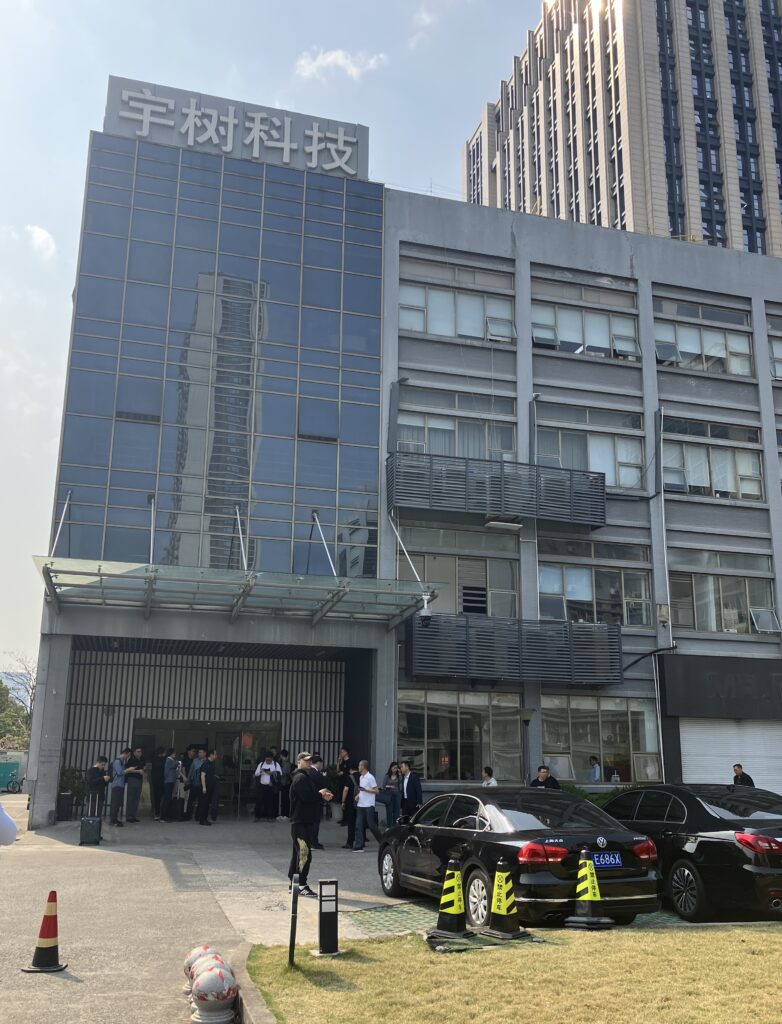
The lobby is also pretty low-key. With a standard security guy.
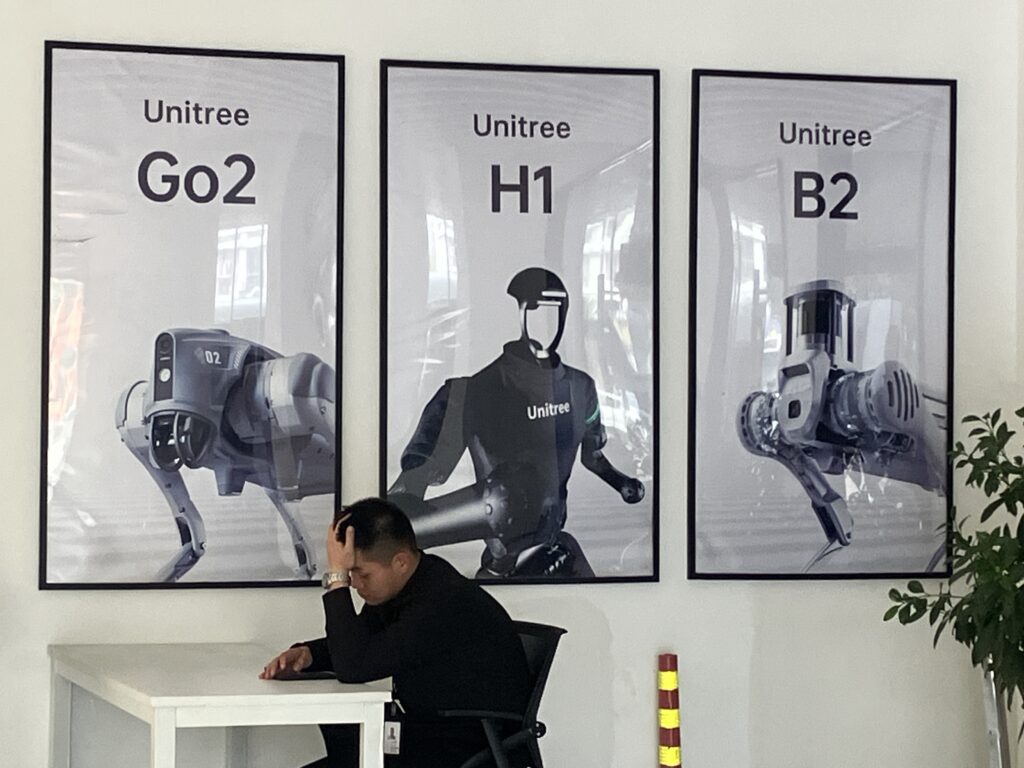
We went upstairs to their little showroom. A simple room with a sign on the wall. Some displays. And 3-4 robots moving around.

Which brings me to their Robot Dog.
The History of Unitree and Its Robot Dog
Unitree was founded in 2016 by Wang Xingxing. And the company has always been about the robotic dog (i.e., the quadruped), which Wang had been working on for 3-4 years prior to founding Unitree.
Wang was born in 1990 in nearby Ningbo city. He did a bachelor’s of mechanical engineer at nearby Zhejiang Sci-Tech University. And then did a Master of Mechanical Engineering at Shanghai University. It’s not surprising that he founded his company in Hangzhou. He’s very local.
While at Shanghai University, he first developed his first version of the robot dog, then called the XDog. It was part of his postgraduate work. Here’s the earliest version, which is on display at the HQ.
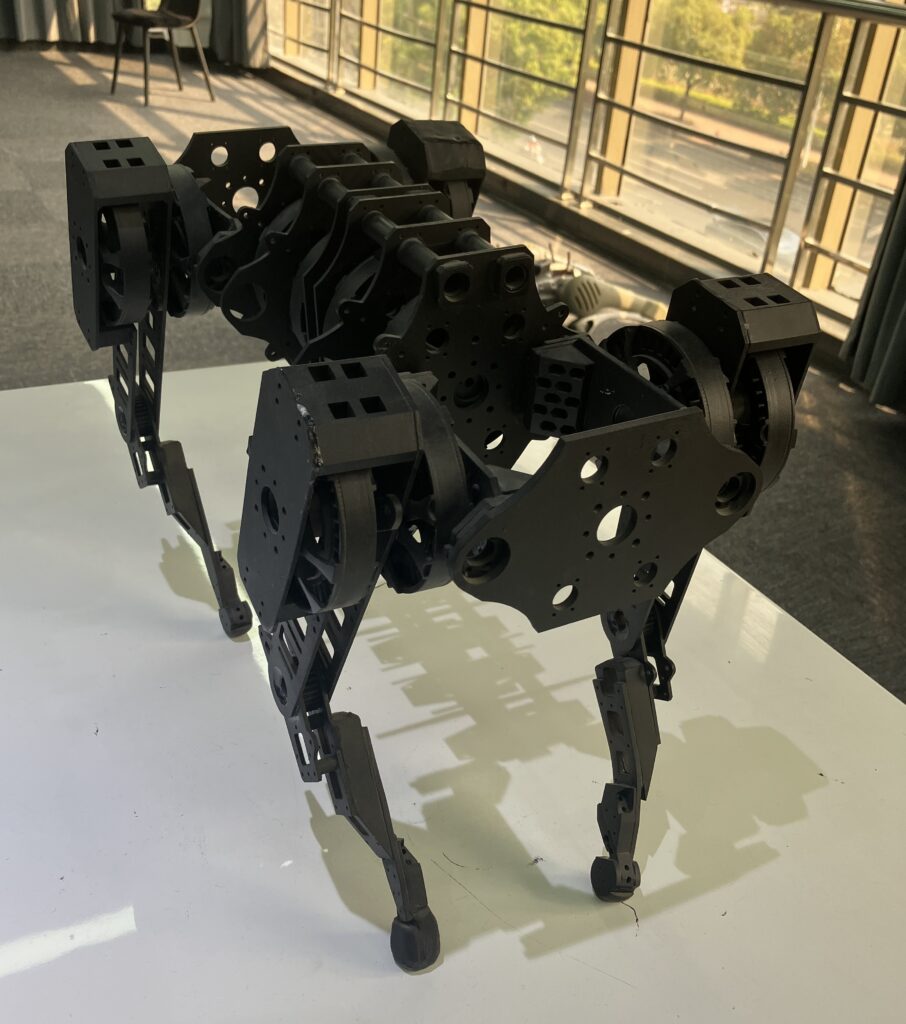
It’s the same basic shape as today. But it has no brain. And no cameras.
Wang did a short 1–2-years at drone leader DJI but quickly left to found Unitree. After which, new robot dogs came out in a steady progression over the next 5 years. Below, you can see the Laikago (2016).
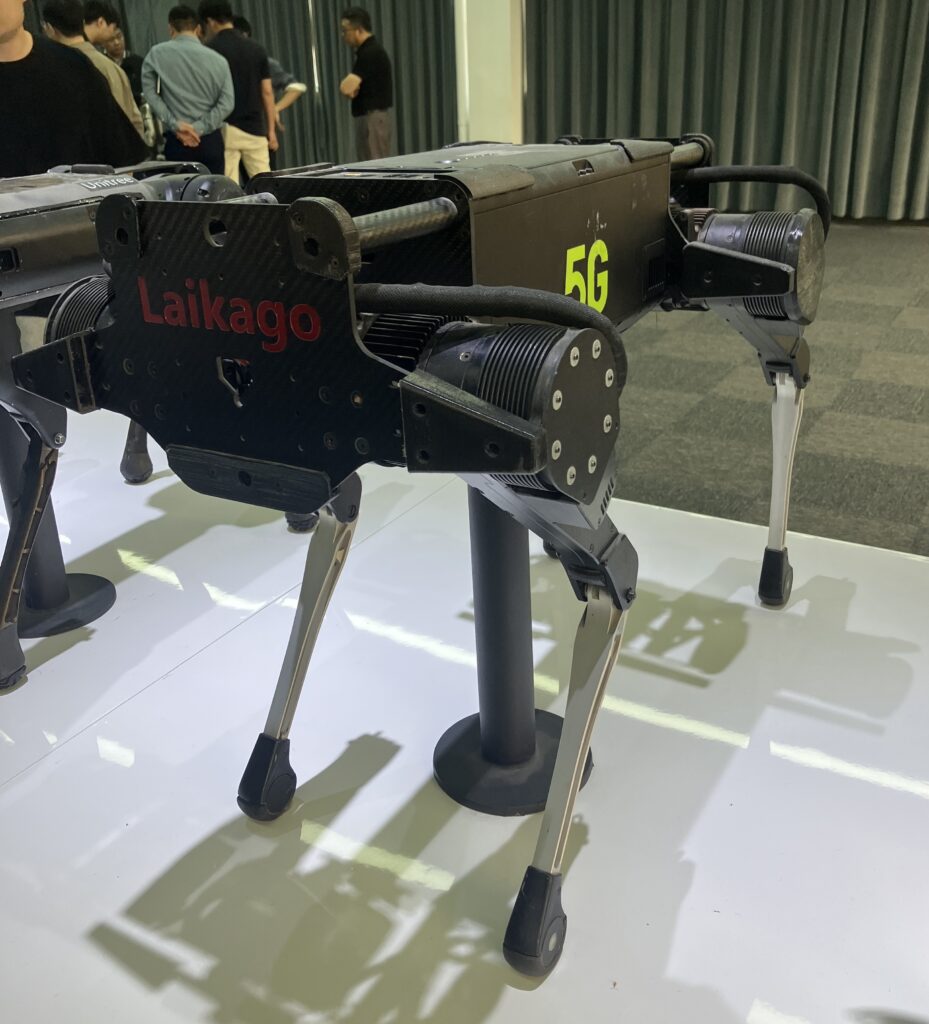
Then came the Aliengo (2019), which added cameras. The robot dogs added APIs and programmability during this period.
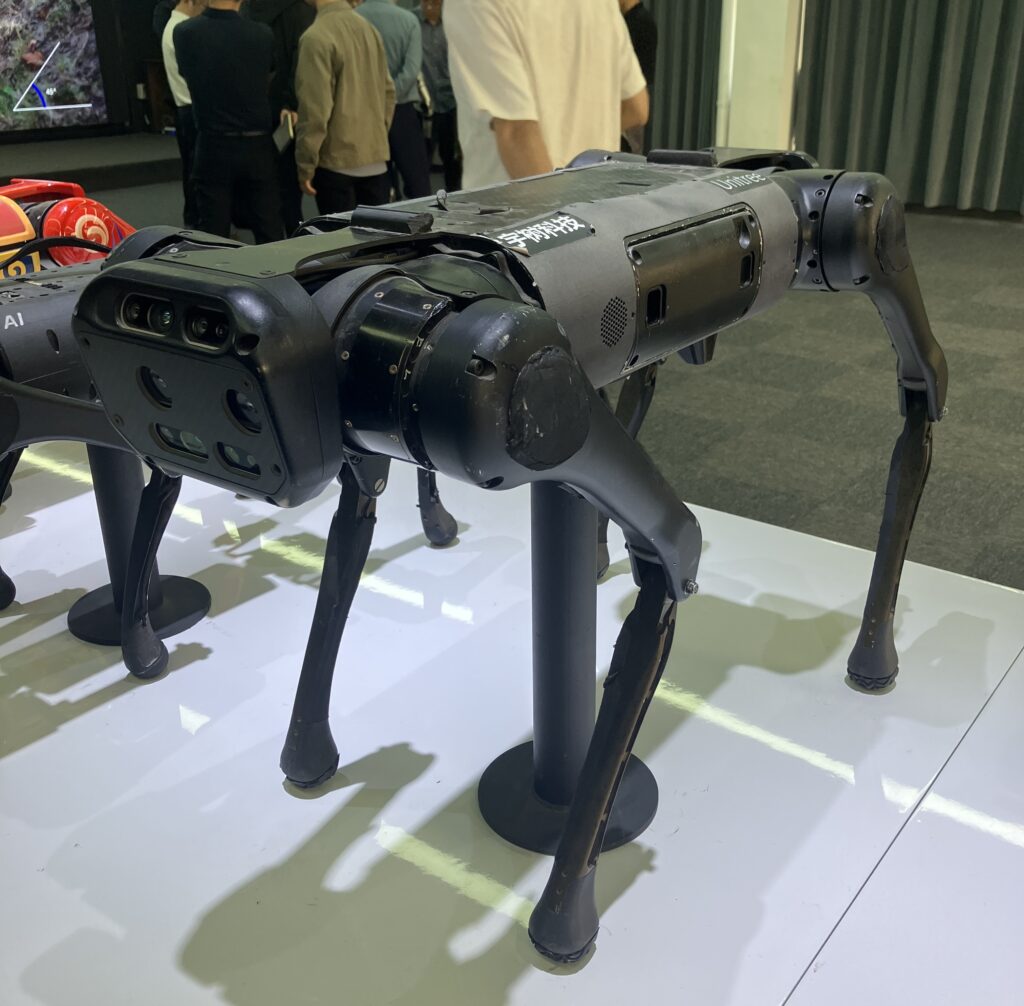
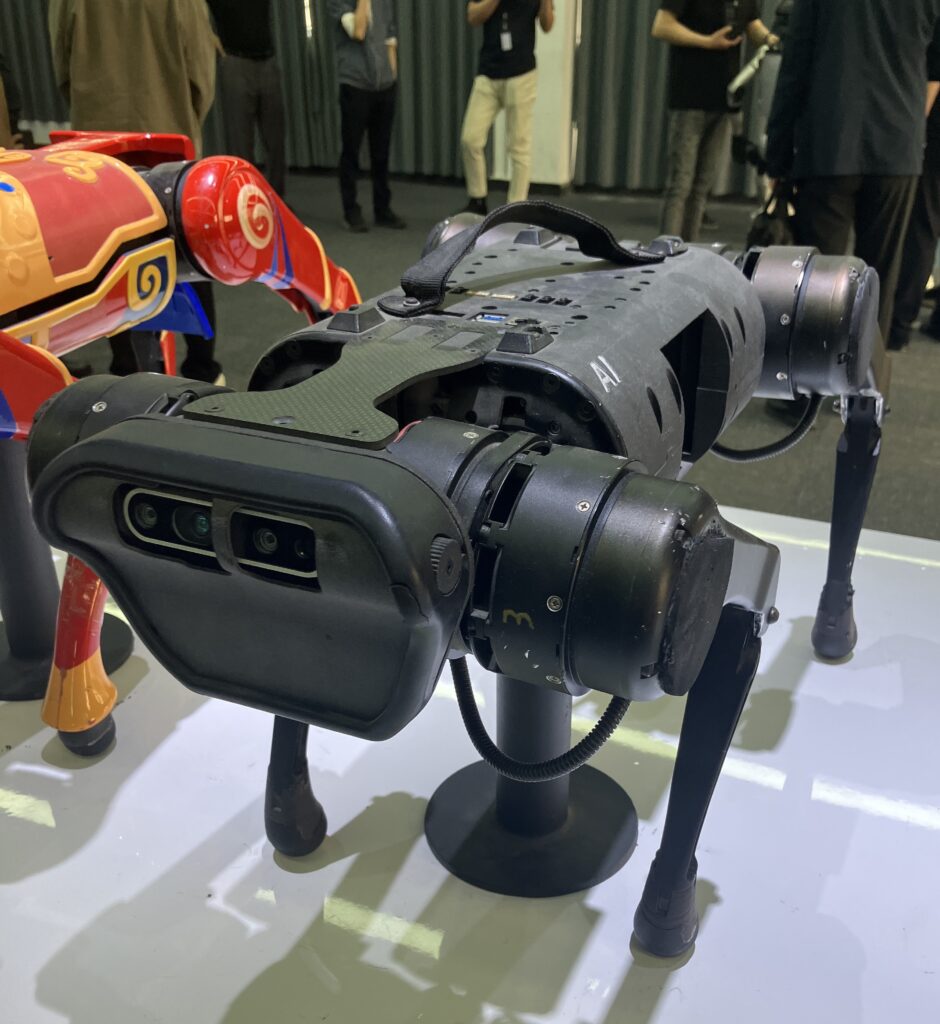
This is also when Unitree made its appearance at China’s Spring Festival Gala. With the below decorated robot. They just made news for having their humanoid robots dancing at the most recent gala (article here and video here).
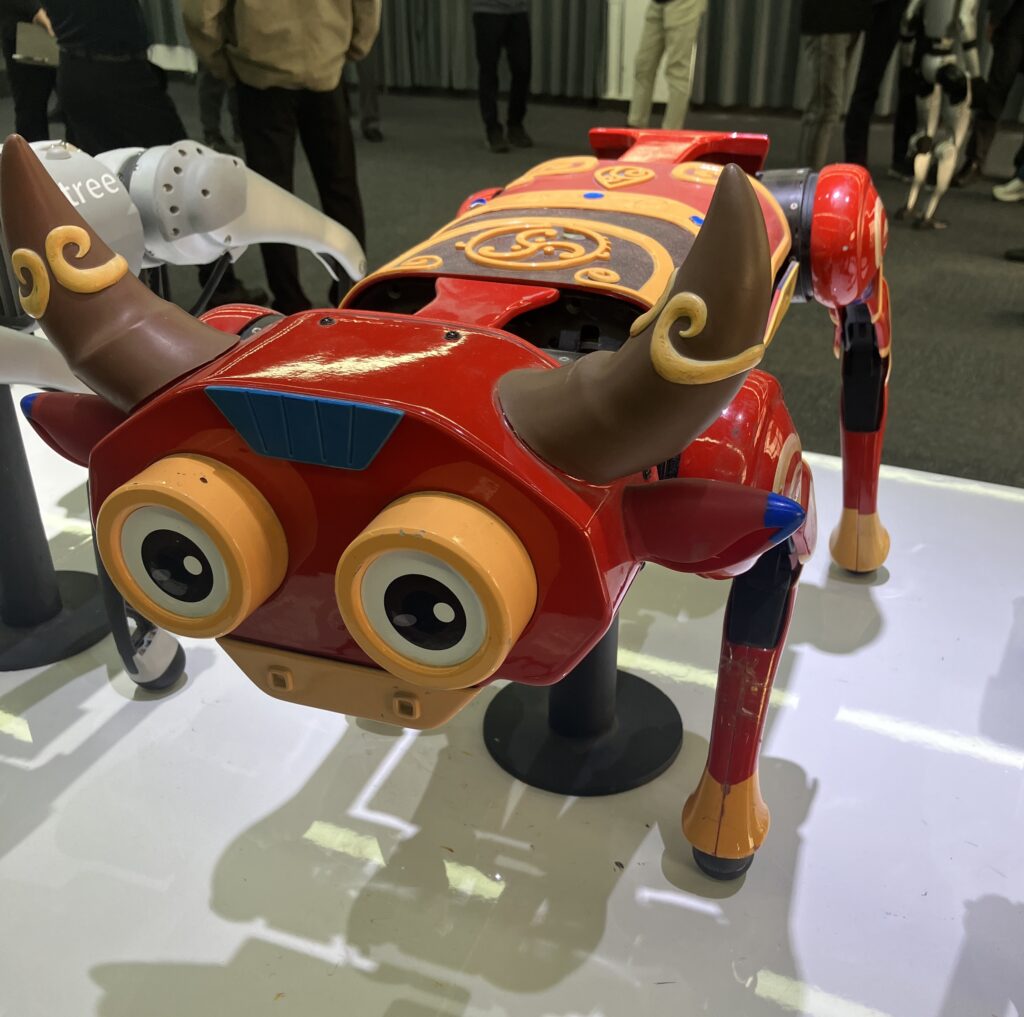
And then came the Go1 in 2021 which really put Unitree on the map.
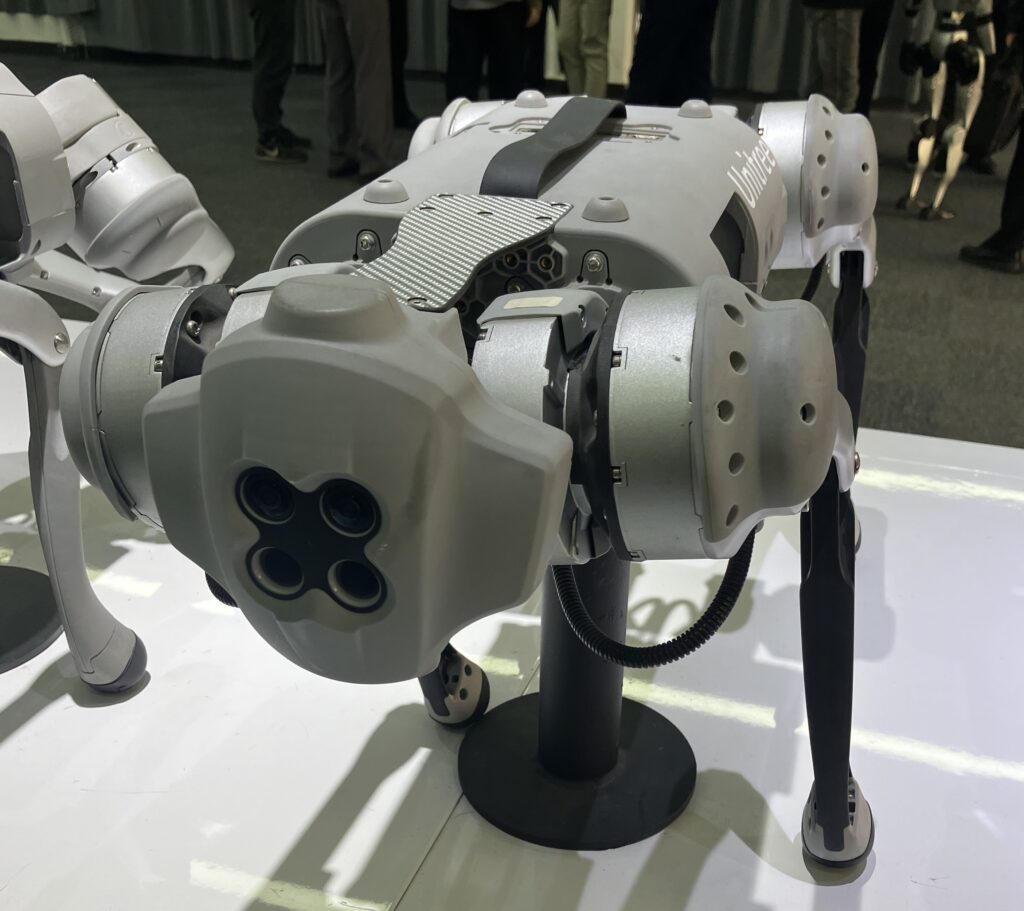
This paved the way for their current hit, the Go2, which has become a viral sensation. What has really stunned everyone is its agility and speed. It is really fast. It does flips. It can walk on its hind legs.
And it offers the basic version at <10k RMB price (about $1600).

Which brings me up to current day.
The Go2 Robot Dog Is So Agile It’s Spooky
The Go2 is small. With a handle on its back so you can pick it up. I’m already thinking about getting one as a toy.
But you really need to see this thing move. It’s fast. It can do handstands. It can run on one wheel and do flips.
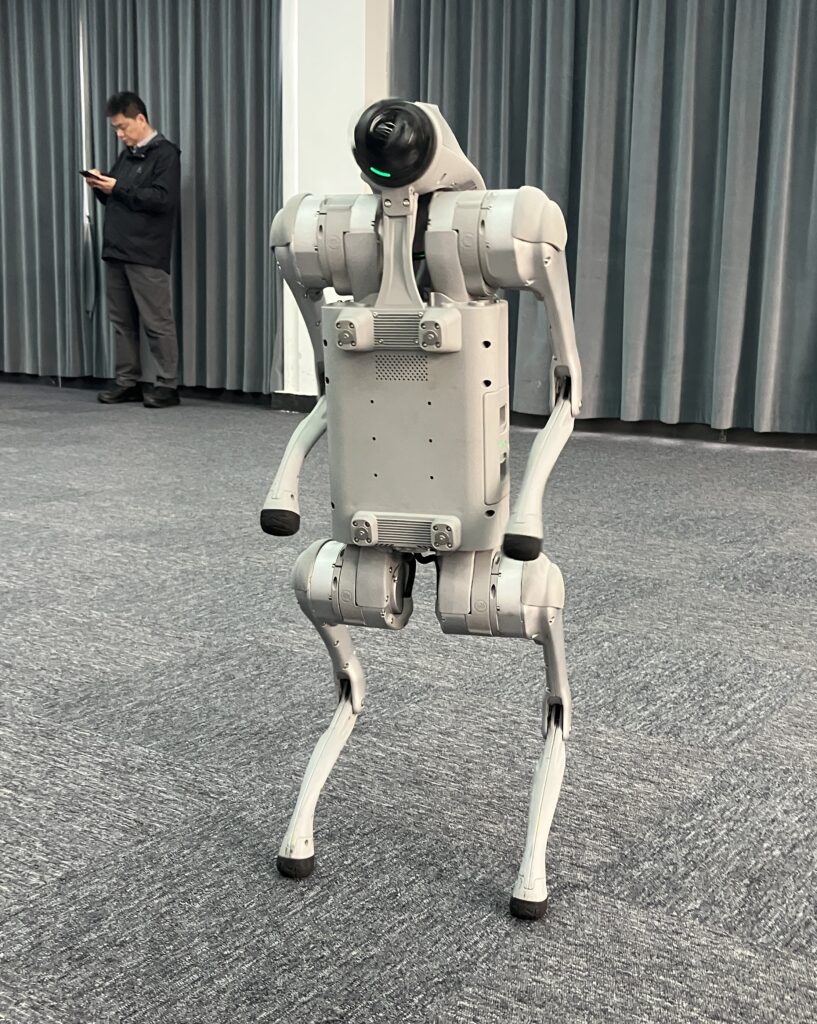
Here are some popular videos of it.
The other important aspect is that it’s programmable. You can map an environment (a power plant, a factory), set a course and it walks it and looks at everything. Or you can control it by remote control.
But it is not intelligent yet. It has a range of actions that are trained in simulation and then downloaded. You can trigger them with the remote control. There is a Software Development Kit and it does have some on-board obstacle avoidance capabilities.
So, we’re not talking about embodied intelligence yet. At least not publicly. The programmable version is more expensive at about $8500.
The stated use cases are pretty minimal. They cite two:
- Think power stations, gas stations, electricity stations.
- Fire safety
So, it walks around and looks at things, with its increasing camera capabilities.
But there are lots of reports (maybe false) that such robot dogs are ending up in militaries around the world. Especially in Russia and Ukraine. We certainly see that with drones. If you want to see what a drone vs dog fight looks like, check out this video.
The strategy for Unitree is to create standardized robot that can be programmed for lots of different actions and use cases by developers around the world. That is a different strategy than making specialized robots. I asked what the coolest use case they had heard about for the Go2 and was told it was leading blind people around.
The Big Version of the Go2 Robot Dog is the B2
The B2 is the larger version. It can carry 120 kg. And has a 4-hour battery life. It can have Lidar. And a robot arm can be put on its back. Note: There are videos of similar robots with machine guns on their backs.
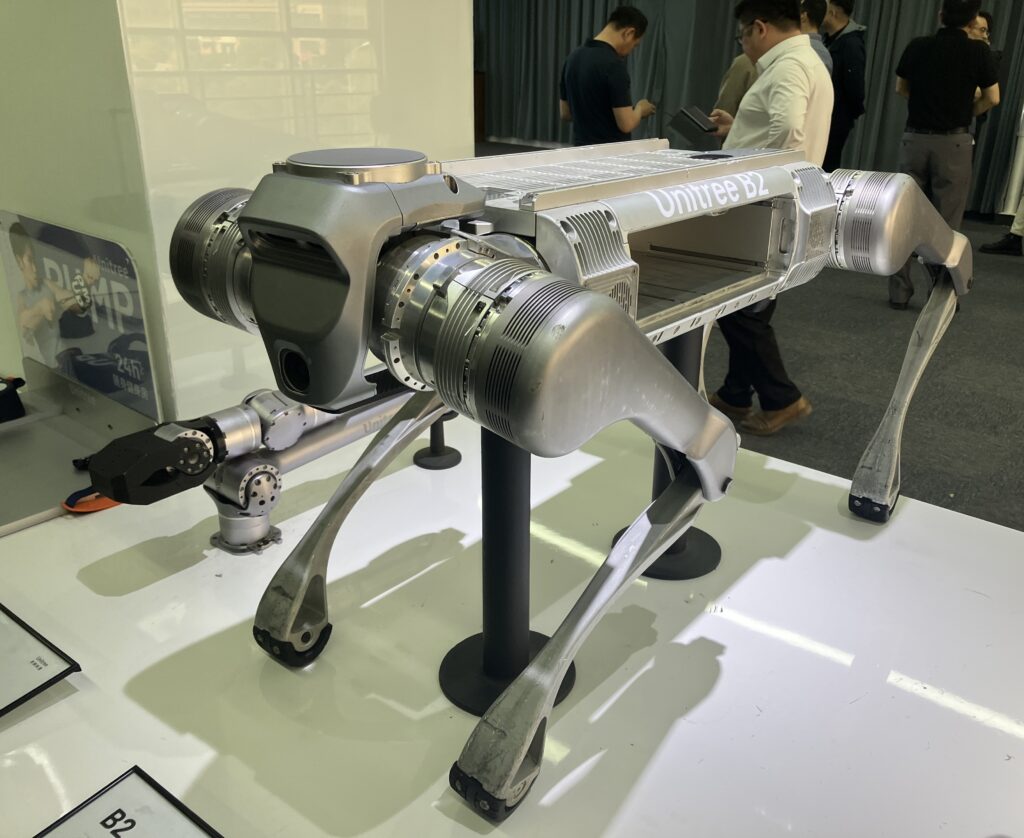

For fun, I stood on the back. And it picked me up like it was nothing. Here is that video.
So, this is bigger. But it’s still just as fast. Here is a great video of how fast this thing is (here).
Unitree Makes Its First Attempts at Humanoid Robots
After almost a decade working on quadrupeds, Unitree finally went after a two-legged humanoid robot. That was recently released as the H1. This is the one that was dancing at the recent gala. Here are some videos of it doing flips and kung fu. And dancing.
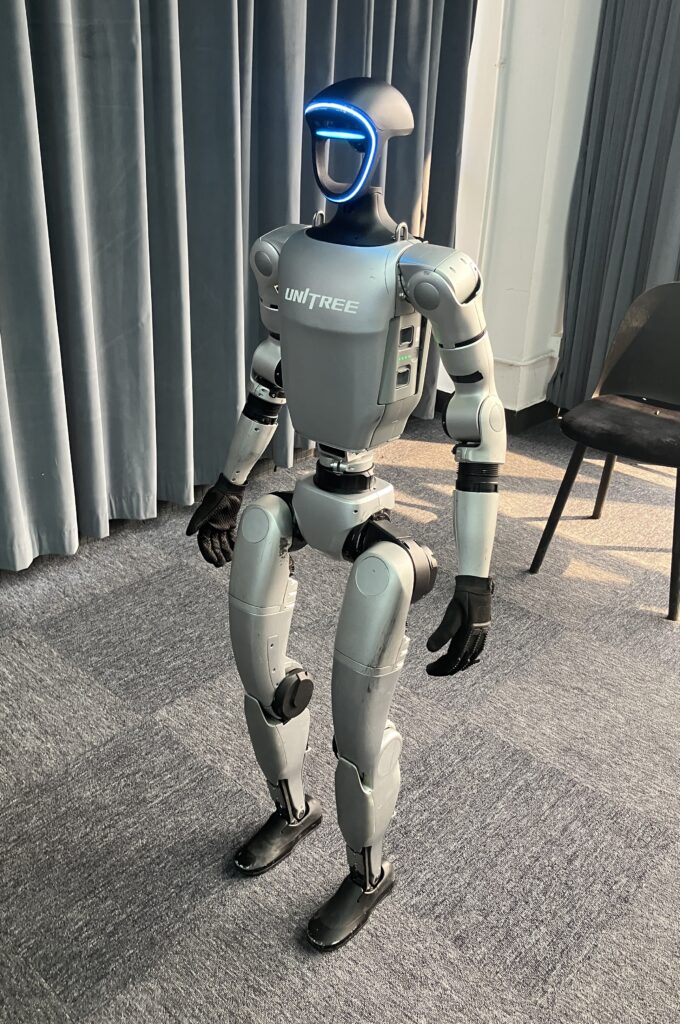
It doesn’t have any public use cases yet.
It looks like Unitree is doing the same approach. The H1 is the smaller lower priced humanoid. And they offer a non-programmable one at $16,000 with a 1–2-hour battery life. And there is a larger 1.8m version on the way. It will be the same size as a human.
Like the robot dogs, the H1 has remote control and an SDK. They’re letting programmers create uses. I asked for their favorite one and hey said MIT is training an H1 to cook.
***
That was basically my visit. It’s worth watching the linked videos. Pretty cool.
Let me get the business strategy part.
3 Lessons from My Visit to Unitree
1. We are seeing a big jump in agility, speed and balance.
This is my big take-away. And this is really why this company has become famous.
The robot dog and humanoid are moving like humans and other living creatures. They are fast. They can balance on one leg. It’s spooky. Unitree has really gotten the robotics to another level. We are getting our first real look at the future is going to be like.
Most of what is happening at Unitree appears to be constant incremental improvements in speed, weight and battery performance.
The big next step I am watching for is combining robotics with AI for embodied intelligence.
2. Everyone is being dodgy about the use cases for these robots
I didn’t really buy inspections as the main use case. These look a lot like military, police and other security assets. But I also understand why such companies would say this. DJI makes consumer drones. But there do seem to be a lot of them on the Russia – Ukraine battlefield. Which they never talk about it.
Unitree is betting on standardized robots (not specialized) with big programmer ecosystem. That makes sense for some categories (four-wheel quadrupeds, standard drones). But I tend to think we are going to see integrated hardware and software. Not generalized hardware and with specialized programs. We’ll see.
3. There is an interesting question about where the intelligence resides. How that impacts learning? And how much is programmed and discovered intelligence.
Tesla cars are edge devices that predict and decide on device in real time. And there is rapid rate of learning in these edge intelligence devices.
Unitree’s robots are trained in simulators and then the programs are downloaded. The onboard intelligence appears to be limited to avoidance.
Drone has very little onboard intelligence and are controlled by rapid connectivity to the cloud or controller.
Construction sites are likely going to be run remotely and by digital twins that create real time sensing and control of all the diggers and machines.
So where will intelligence reside in different use cases and robot types? How much will be programmed? And does this impact the rate of learning?
***
Ok. That’s it for today. Lots of content coming.
-jeff
————-
Related articles:
- Lessons from My Visits to Xiaomi and Unitree Robotics (Tech Strategy – Podcast 242)
- A Breakdown of the Verisign Business Model (2 of 2) (Tech Strategy – Daily Article)
- 3 Factors Will Determine the Future of Verisign Inc. (Tech Strategy – Podcast 191)
From the Concept Library, concepts for this article are:
- Robotics
From the Company Library, companies for this article are:
- Unitree Robotics
———-
I write, speak and consult about how to win (and not lose) in digital strategy and transformation.
I am the founder of TechMoat Consulting, a boutique consulting firm that helps retailers, brands, and technology companies exploit digital change to grow faster, innovate better and build digital moats. Get in touch here.
My book series Moats and Marathons is one-of-a-kind framework for building and measuring competitive advantages in digital businesses.
This content (articles, podcasts, website info) is not investment, legal or tax advice. The information and opinions from me and any guests may be incorrect. The numbers and information may be wrong. The views expressed may no longer be relevant or accurate. This is not investment advice. Investing is risky. Do your own research.
